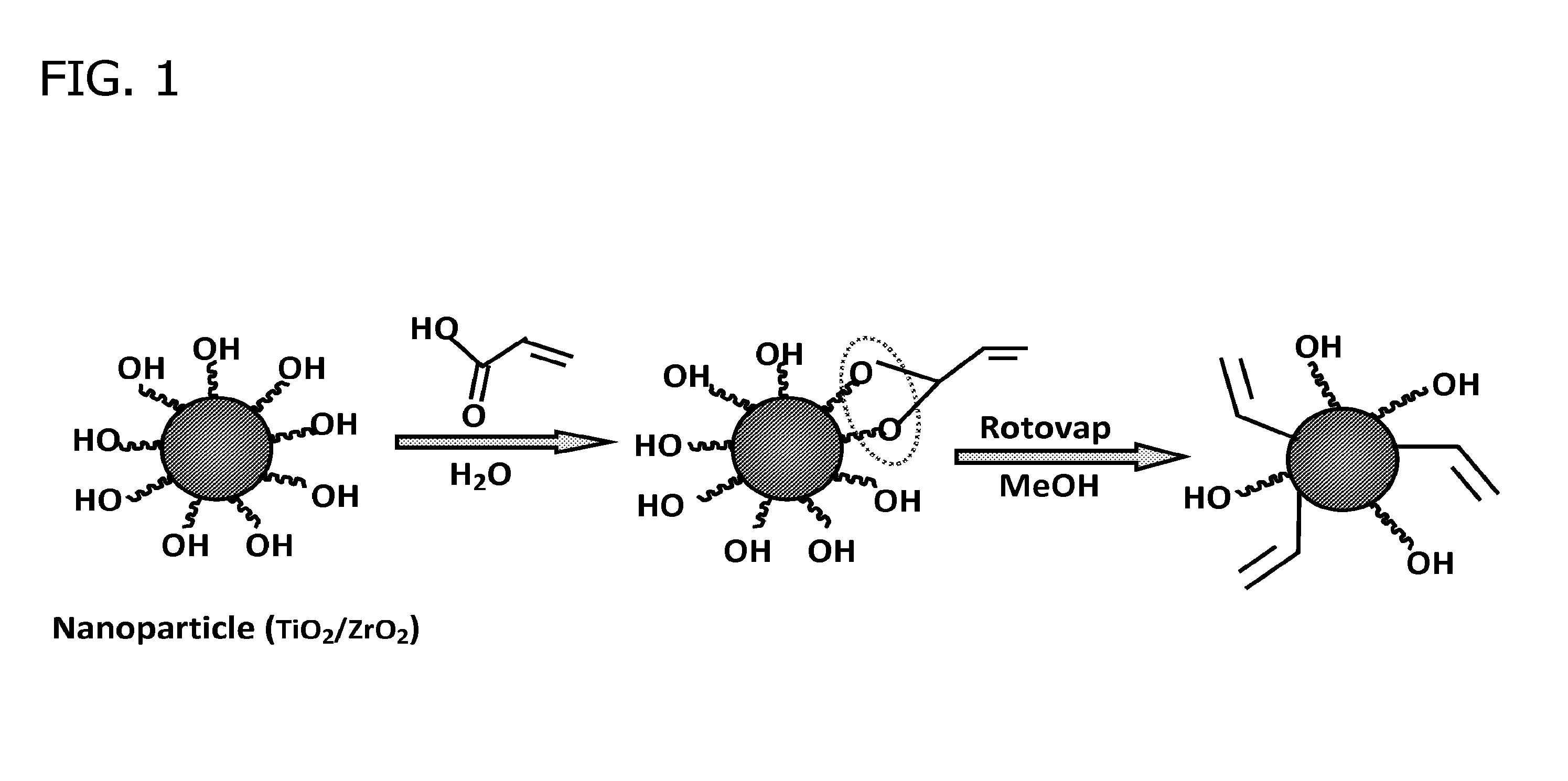Thiol-ene polymer metal oxide nanoparticle high refractive index composites
For optical applications in general and eyewear in particular, the synthesis of new polymers with refractive indices >1.65 and acceptable Abbe numbers is of considerable importance. Higher refractive index materials will permit smaller, lighter weight lenses to be used and provide a much broader graded index for progressive lenses. The material modification that leads to higher refractive indices is the incorporation of highly polarizable atoms and ions. Incorporating such polarizable groups has been the standard protocol used to develop new high R.I. polymers. The electronic polarizability is a tensor property of an atom or molecule that measures the distortion of the electron cloud in the presence of an applied electric field (which can be an optical field). The more the electron cloud can be distorted, the higher the refractive index. The characteristics of atomic and molecular electronic structure that yield large polarizabilities are well understood and can be predicted from basic chemical principles. In particular, the more electronegative an atom is the less polarizable it will be, hence late first-row elements such as F, O and N tend to yield lower refractive index materials. Better choices are 2nd, 3rd or 4th row main group elements such as S (which is currently used in order to increase the refractive index in many polymeric materials), P, and Sn. From a molecular standpoint, the higher electronegativity of the first row can be overcome by delocalization of the electrons across several atoms. Aromatics are more polarizable than saturated hydrocarbons and compounds such as propylene carbonate and dimethylformamide have high dielectric constants.
the present invention comprises a bulk polymer composite comprising a thiol-ene polymer matrix, or a matrix comprising a corresponding polymer derived from a phosphinyl, selenol, or arsinyl monomer, and metal oxide nanoparticles dispersed within the matrix, said nanoparticles being bonded to polymer molecules contained in the matrix. In certain preferred embodiments, the polymer matrix comprises a matrix corresponding to the structure.


